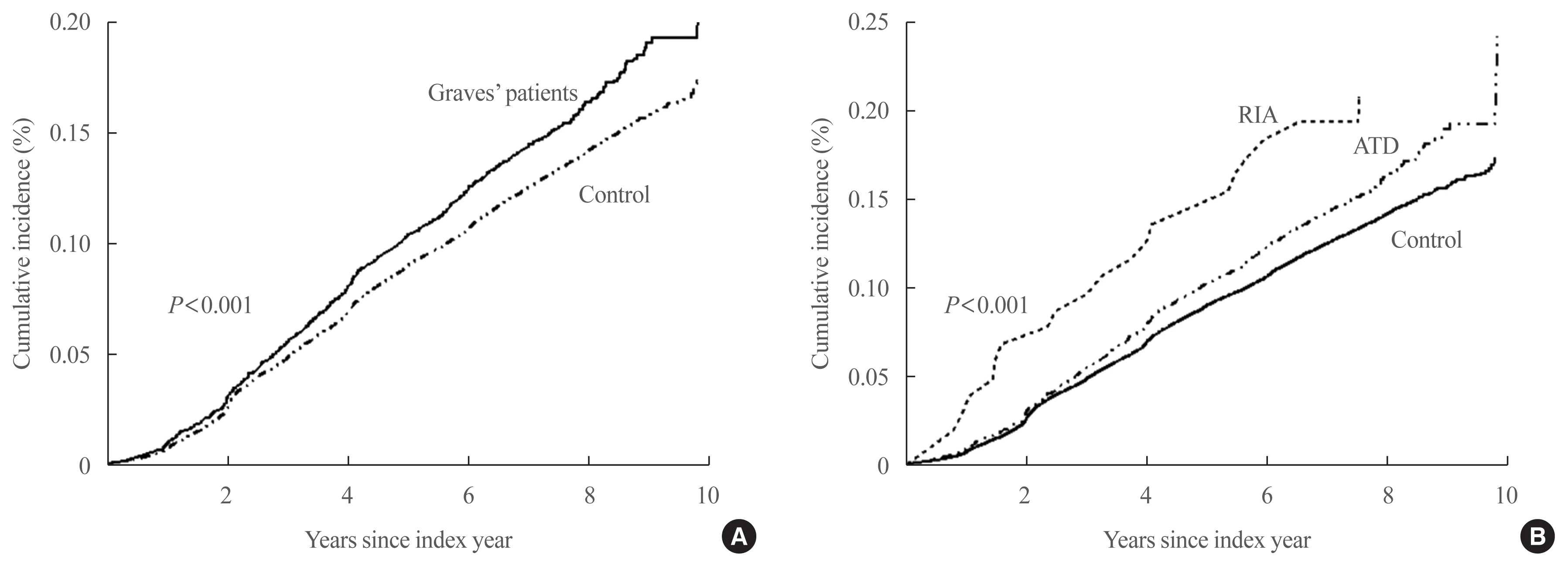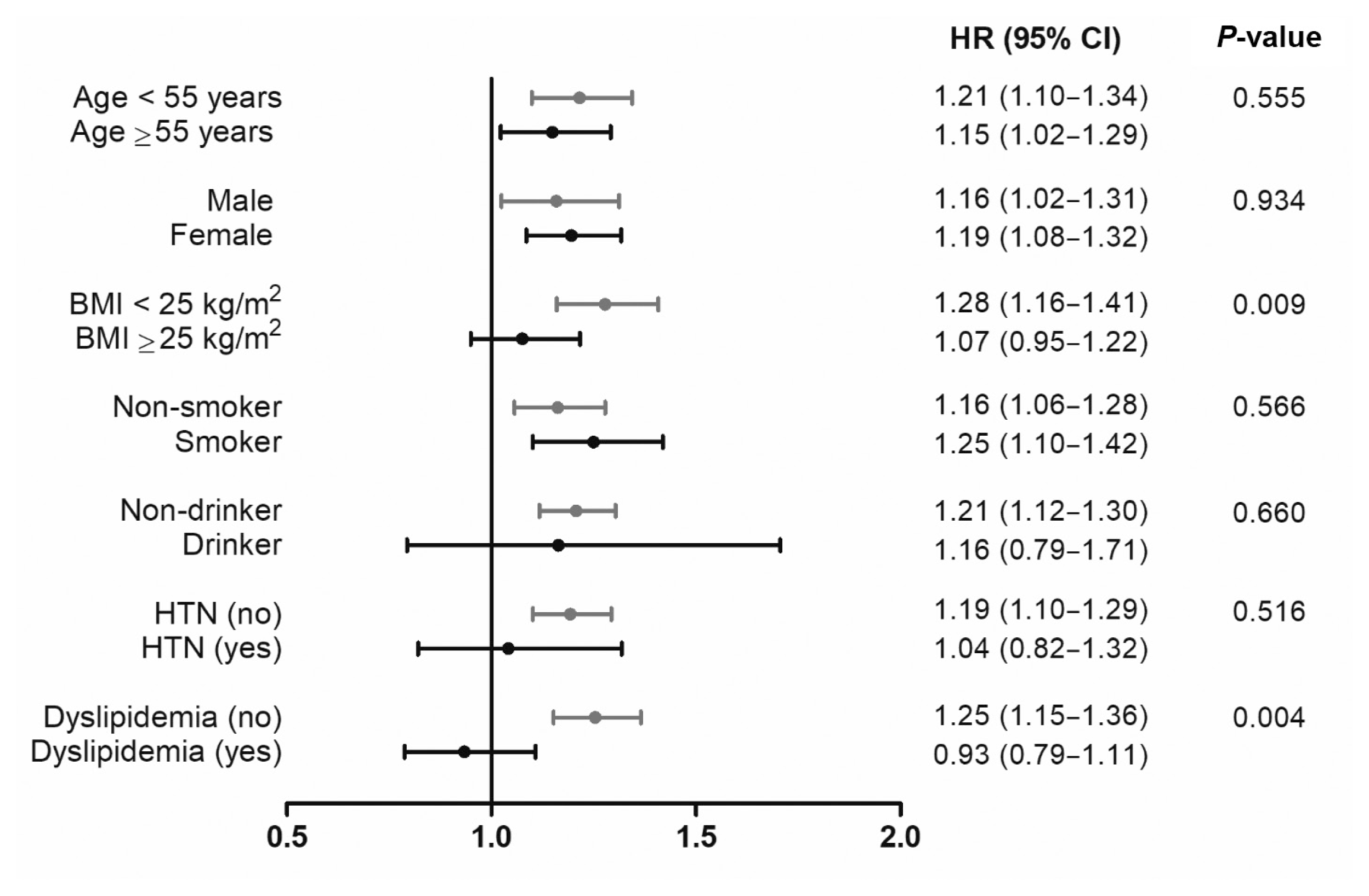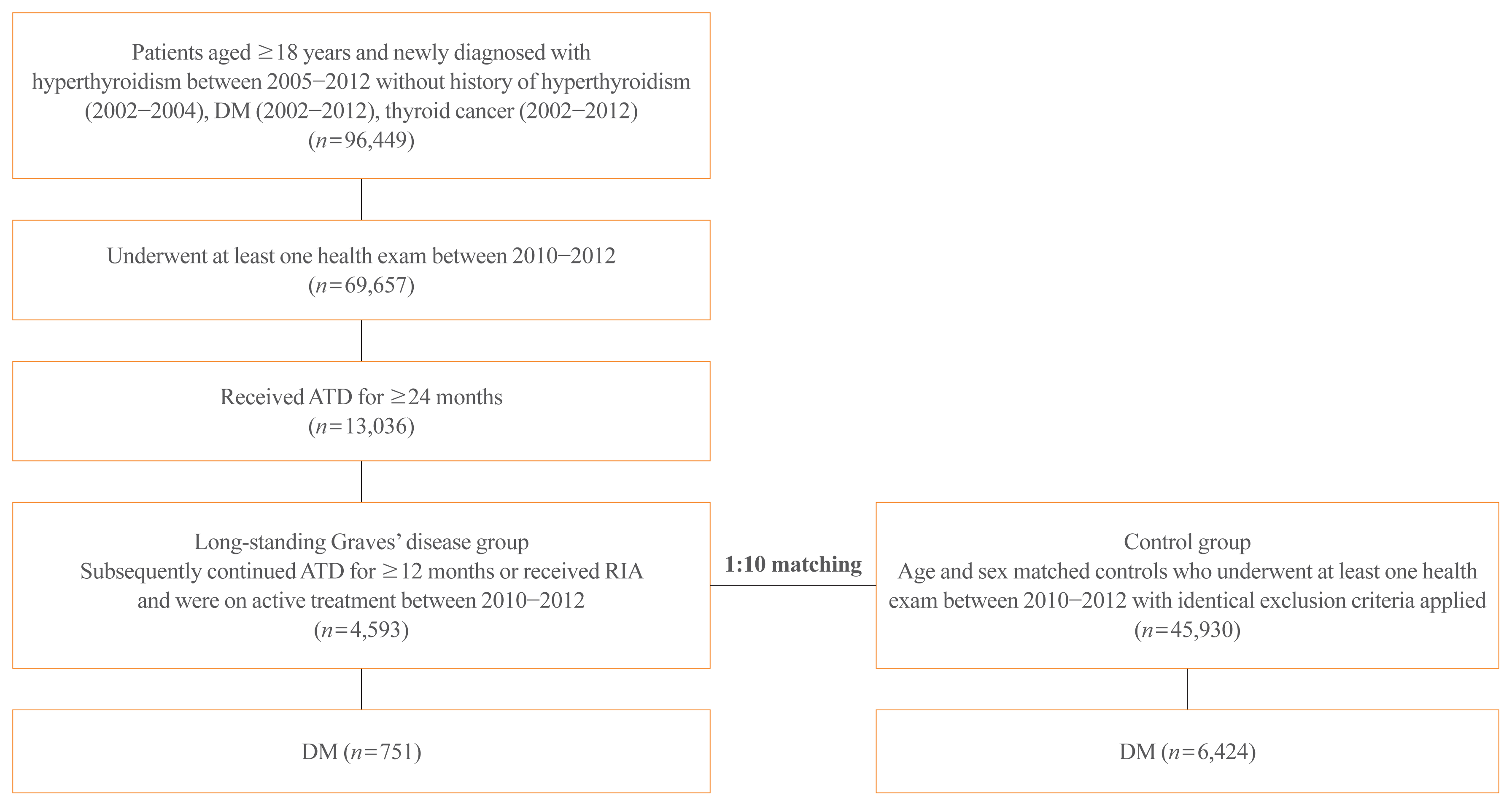1. De Leo S, Lee SY, Braverman LE. Hyperthyroidism. Lancet. 2016; 388:906–918.

2. Cooper DS. Hyperthyroidism. Lancet. 2003; 362:459–68.

3. Burch HB, Burman KD, Cooper DS. A 2011 survey of clinical practice patterns in the management of Graves’ disease. J Clin Endocrinol Metab. 2012; 97:4549–58.

4. Brito JP, Schilz S, Singh Ospina N, Rodriguez-Gutierrez R, Maraka S, Sangaralingham LR, et al. Antithyroid drugs-the most common treatment for Graves’ disease in the United States: a nationwide population-based study. Thyroid. 2016; 26:1144–5.

5. Abraham P, Avenell A, McGeoch SC, Clark LF, Bevan JS. Antithyroid drug regimen for treating Graves’ hyperthyroidism. Cochrane Database Syst Rev. 2010; 2010:CD003420.

6. Azizi F, Amouzegar A, Tohidi M, Hedayati M, Khalili D, Cheraghi L, et al. Increased remission rates after long-term methimazole therapy in patients with Graves’ disease: results of a randomized clinical trial. Thyroid. 2019; 29:1192–200.

7. Chung JH. Antithyroid drug treatment in Graves’ disease. Endocrinol Metab (Seoul). 2021; 36:491–9.

8. Rajput R, Jain D, Pathak V, Dangi A. Diabetic ketoacidosis and thyroid storm: coexistence of a double trouble. BMJ Case Rep. 2018; 2018:bcr2018225748.

9. Perros P, McCrimmon RJ, Shaw G, Frier BM. Frequency of thyroid dysfunction in diabetic patients: value of annual screening. Diabet Med. 1995; 12:622–7.

10. Kadiyala R, Peter R, Okosieme OE. Thyroid dysfunction in patients with diabetes: clinical implications and screening strategies. Int J Clin Pract. 2010; 64:1130–9.

11. Wu P. Thyroid disorders and diabetes: it is common for a person to be affected by both thyroid disease and diabetes. Diabetes Self Manag. 2007; 24:80-2–85-7.
12. Brenta G, Danzi S, Klein I. Potential therapeutic applications of thyroid hormone analogs. Nat Clin Pract Endocrinol Metab. 2007; 3:632–40.

13. Goglia F, Moreno M, Lanni A. Action of thyroid hormones at the cellular level: the mitochondrial target. FEBS Lett. 1999; 452:115–20.

14. Wang C. The relationship between type 2 diabetes mellitus and related thyroid diseases. J Diabetes Res. 2013; 2013:390534.

15. Crunkhorn S, Patti ME. Links between thyroid hormone action, oxidative metabolism, and diabetes risk? Thyroid. 2008; 18:227–37.

16. Gray RS, Irvine WJ, Clarke BF. Screening for thyroid dysfunction in diabetics. Br Med J. 1979; 2:1439.

17. Mouradian M, Abourizk N. Diabetes mellitus and thyroid disease. Diabetes Care. 1983; 6:512–20.

18. Nerup J, Binder C. Thyroid, gastric and adrenal auto-immunity in diabetes mellitus. Acta Endocrinol (Copenh). 1973; 72:279–86.

19. Radetti G, Paganini C, Gentili L, Bernasconi S, Betterle C, Borkenstein M, et al. Frequency of Hashimoto’s thyroiditis in children with type 1 diabetes mellitus. Acta Diabetol. 1995; 32:121–4.

20. Fleiner HF, Bjoro T, Midthjell K, Grill V, Asvold BO. Prevalence of thyroid dysfunction in autoimmune and type 2 diabetes: the population-based HUNT study in Norway. J Clin Endocrinol Metab. 2016; 101:669–77.

21. Ogbonna SU, Ezeani IU. Risk factors of thyroid dysfunction in patients with type 2 diabetes mellitus. Front Endocrinol (Lausanne). 2019; 10:440.

22. Lee J, Lee JS, Park SH, Shin SA, Kim K. Cohort profile: the National Health Insurance Service-National Sample Cohort (NHIS-NSC), South Korea. Int J Epidemiol. 2017; 46:e15.

23. Allannic H, Fauchet R, Orgiazzi J, Madec AM, Genetet B, Lorcy Y, et al. Antithyroid drugs and Graves’ disease: a prospective randomized evaluation of the efficacy of treatment duration. J Clin Endocrinol Metab. 1990; 70:675–9.

24. Coller FA, Huggins CB. Effect of hyperthyroidism upon diabetes mellitus: striking improvement in diabetes mellitus from thyroidectomy. Ann Surg. 1927; 86:877–84.
25. Elrick H, Hlad CJ Jr, Arai Y. Influence of thyroid function on carbohydrate metabolism and a new method for assessing response to insulin. J Clin Endocrinol Metab. 1961; 21:387–400.

26. Hales CN, Hyams DE. Plasma concentrations of glucose, non-esterified fatty acid, and insulin during oral glucose-tolerance tests in thyrotoxicosis. Lancet. 1964; 2:69–71.

27. Kreines K, Jett M, Knowles HC Jr. Observations in hyperthyroidism of abnormal glucose tolerance and other traits related to diabetes mellitus. Diabetes. 1965; 14:740–4.

28. Doar JW, Stamp TC, Wynn V, Audhya TK. Effects of oral and intravenous glucose loading in thyrotoxicosis: studies of plasma glucose, free fatty acid, plasma insulin and blood pyruvate levels. Diabetes. 1969; 18:633–9.

29. Kahaly GJ, Bartalena L, Hegedus L, Leenhardt L, Poppe K, Pearce SH. 2018 European Thyroid Association guideline for the management of Graves’ hyperthyroidism. Eur Thyroid J. 2018; 7:167–86.

30. Ross DS, Burch HB, Cooper DS, Greenlee MC, Laurberg P, Maia AL, et al. 2016 American Thyroid Association guidelines for diagnosis and management of hyperthyroidism and other causes of thyrotoxicosis. Thyroid. 2016; 26:1343–421.

31. Moon JH, Yi KH. The diagnosis and management of hyperthyroidism in Korea: consensus report of the Korean Thyroid Association. Endocrinol Metab (Seoul). 2013; 28:275–9.

32. Brandt F, Thvilum M, Almind D, Christensen K, Green A, Hegedus L, et al. Morbidity before and after the diagnosis of hyperthyroidism: a nationwide register-based study. PLoS One. 2013; 8:e66711.

33. Gronich N, Deftereos SN, Lavi I, Persidis AS, Abernethy DR, Rennert G. Hypothyroidism is a risk factor for new-onset diabetes: a cohort study. Diabetes Care. 2015; 38:1657–64.

34. Thvilum M, Brandt F, Almind D, Christensen K, Brix TH, Hegedus L. Type and extent of somatic morbidity before and after the diagnosis of hypothyroidism: a nationwide register study. PLoS One. 2013; 8:e75789.

35. Chaker L, Ligthart S, Korevaar TI, Hofman A, Franco OH, Peeters RP, et al. Thyroid function and risk of type 2 diabetes: a population-based prospective cohort study. BMC Med. 2016; 14:150.

36. Ganz ML, Wintfeld N, Li Q, Alas V, Langer J, Hammer M. The association of body mass index with the risk of type 2 diabetes: a case-control study nested in an electronic health records system in the United States. Diabetol Metab Syndr. 2014; 6:50.

37. Mooradian AD. Dyslipidemia in type 2 diabetes mellitus. Nat Clin Pract Endocrinol Metab. 2009; 5:150–9.

38. Johansen Taber KA, Dickinson BD. Genomic-based tools for the risk assessment, management, and prevention of type 2 diabetes. Appl Clin Genet. 2015; 8:1–8.

39. Yi KH, Moon JH, Kim IJ, Bom HS, Lee J, Chung WY, et al. The diagnosis and management of hyperthyroidism consensus: report of the Korean Thyroid Association. J Korean Thyroid Assoc. 2013; 6:1–11.

40. Kim YA, Cho SW, Choi HS, Moon S, Moon JH, Kim KW, et al. The second antithyroid drug treatment is effective in relapsed Graves’ disease patients: a median 11-year follow-up study. Thyroid. 2017; 27:491–6.

41. Park SY, Kim BH, Kim M, Hong AR, Park J, Park H, et al. The longer the antithyroid drug is used, the lower the relapse rate in Graves’ disease: a retrospective multicenter cohort study in Korea. Endocrine. 2021; 74:120–7.

42. Hu Y, Gao G, Yan RN, Li FF, Su XF, Ma JH. Glucose metabolism before and after radioiodine therapy of a patient with Graves’ disease: assessment by continuous glucose monitoring. Biomed Rep. 2017; 7:183–7.

43. Kiani J, Yusefi V, Tohidi M, Mehrabi Y, Azizi F. Evaluation of glucose tolerance in methimazole and radioiodine treated Graves’ patients. Int J Endocrinol Metab. 2010; 8:132–7.
44. Spitzweg C, Joba W, Schriever K, Goellner JR, Morris JC, Heufelder AE. Analysis of human sodium iodide symporter immunoreactivity in human exocrine glands. J Clin Endocrinol Metab. 1999; 84:4178–84.

45. Riley PA. Free radicals in biology: oxidative stress and the effects of ionizing radiation. Int J Radiat Biol. 1994; 65:27–33.

46. Samadi R, Shafiei B, Azizi F, Ghasemi A. Radioactive iodine therapy and glucose tolerance. Cell J. 2017; 19:184–93.
47. Sundaram PS, Padma S, Sudha S, Sasikala K. Transient cytotoxicity of 131I beta radiation in hyperthyroid patients treated with radioactive iodine. Indian J Med Res. 2011; 133:401–6.
48. Kemp HF, Hundal HS, Taylor PM. Glucose transport correlates with GLUT2 abundance in rat liver during altered thyroid status. Mol Cell Endocrinol. 1997; 128:97–102.

49. Mokuno T, Uchimura K, Hayashi R, Hayakawa N, Makino M, Nagata M, et al. Glucose transporter 2 concentrations in hyper- and hypothyroid rat livers. J Endocrinol. 1999; 160:285–9.

50. Vaughan M. An in vitro effect of triiodothyronine on rat adipose tissue. J Clin Invest. 1967; 46:1482–91.

51. Dimitriadis G, Baker B, Marsh H, Mandarino L, Rizza R, Bergman R, et al. Effect of thyroid hormone excess on action, secretion, and metabolism of insulin in humans. Am J Physiol. 1985; 248(5 Pt 1):E593–601.

52. O’Meara NM, Blackman JD, Sturis J, Polonsky KS. Alterations in the kinetics of C-peptide and insulin secretion in hyperthyroidism. J Clin Endocrinol Metab. 1993; 76:79–84.

53. Levin RJ, Smyth DH. The effect of the thyroid gland on intestinal absorption of hexoses. J Physiol. 1963; 169:755–69.

54. Matty AJ, Seshadri B. Effect of thyroxine on the isolated rat intestine. Gut. 1965; 6:200–2.

55. Sarfo-Kantanka O, Sarfo FS, Ansah EO, Kyei I. The effect of thyroid dysfunction on the cardiovascular risk of type 2 diabetes mellitus patients in Ghana. J Diabetes Res. 2018; 2018:4783093.







 PDF
PDF Citation
Citation Print
Print




 XML Download
XML Download